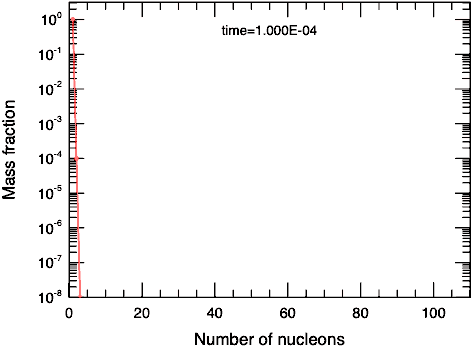
|
Cococubed.com
|
| Slow Neutron Captures |
Home
Astronomy Research
2025 Neutrinos From De-excitation
Radiative Opacity
2024 Neutrino Emission from Stars
2023 White Dwarfs & 12C(α,γ)16O
2023 MESA VI
2022 Earendel, A Highly Magnified Star
2022 Black Hole Mass Spectrum
2021 Skye Equation of State
2021 White Dwarf Pulsations & 22Ne
Software Instruments
Stellar equation of states
EOS with ionization
EOS for supernovae
Chemical potentials
Stellar atmospheres
Voigt Function
Jeans escape
Polytropic stars
Cold white dwarfs
Adiabatic white dwarfs
Cold neutron stars
Stellar opacities
Neutrino energy loss rates
Ephemeris routines
Fermi-Dirac functions
Polyhedra volume
Plane - cube intersection
Coating an ellipsoid
Nuclear reaction networks
Nuclear statistical equilibrium
Laminar deflagrations
CJ detonations
ZND detonations
Fitting to conic sections
Unusual linear algebra
Derivatives on uneven grids
Pentadiagonal solver
Quadratics, Cubics, Quartics
Supernova light curves
Exact Riemann solutions
1D PPM hydrodynamics
Hydrodynamic test cases
Galactic chemical evolution
Universal two-body problem
Circular and elliptical 3 body
The pendulum
Phyllotaxis
MESA
MESA-Web
FLASH
Zingale's software
Brown's dStar
GR1D code
Iliadis' STARLIB database
Herwig's NuGRID
Meyer's NetNuc
AAS Journals
2025 AAS YouTube
2025 Listing of 500+ Author Videos
2025 AAS Peer Review Workshops
2025 ASU Energy in Everyday Life
2025 MESA Classroom
Other Stuff:
Bicycle Adventures
Illustrations
Presentations
Contact: F.X.Timmes
my one page vitae,
full vitae,
research statement, and
teaching statement.
The tool minis.tbz evolves an educational version of an s-process reaction network. One hundred isotopes are evolved until a chosen ending time. The initial abundance of the first isotope, notionally 56Fe, is taken equal to one. Guidance on what this tool does seems prudent. Let $R$ be the reaction rate for (n,g) reactions. In general $R$ is temperature, density, and composition dependent - but not here. The ordinary differential equations describing the change in the abundances $y$ of the $m$ isotopes are: \begin{equation} \frac{{\rm d}y_{1}}{{\rm d}t} = -y_{1} - R_{1} \hskip 0.5in \frac{{\rm d}y_{i}}{{\rm d}t} = y_{i-1} \ R_{i-1} - y_{i} \ R_{i} \ , \ i=1,2\ldots,m-1 \hskip 0.5in \frac{{\rm d}y_{m}}{{\rm d}t} = y_{m-1} \ R_{m-1} \label{eq1} \tag{1} \end{equation} For the implicit first-order accurate Euler method, each abundance is updated over a timestep h as $y_{i}^{{\rm new}} = y_{i} + \Delta y_{i}$. The change in the abundances over a time step $\Delta y_{i}$ is obtained from solving the system of linear equations $({\bf I}/h - \tilde{{\bf J}}) \cdot \Delta {\bf y} = \dot{\bf y}$, which is simply the familar $\tilde{{\bf A}} \cdot {\bf x} = {\bf b}$. With only (n,g) reactions, Jacobian matrix $\tilde{{\bf J}}$ has the simple form \begin{equation} \left[\begin{array}{rrrrrr} -R_{1} & & & & & \\ R_{1} & -R_{2} & & & & \\ & R_{2} & -R_{3} & & & \\ & & & \ldots & & \\ & & & & R_{m-1} & 0 \\ \end{array}\right] \label{eq2} \tag{2} \end{equation} This system of linear equations can be easily solved by hand: \begin{equation} \Delta y_1 = \frac{-y_1 R_1}{1/h + R_1} \hskip 0.5in \Delta y_i = \frac { y_{i-1} R_{i-1} - y_i R_i } {1/h + R_i} \ , \ i=1,2\ldots,m-1 \hskip 0.5in \Delta y_m = \frac{-y_{m-1} R_{m-1}}{1/h} \label{eq3} \tag{3} \end{equation} Thus the succint evolution loop implemented in minis.tbz. Here are some results:

|
All exposures equal to one |

|
A middle exposure at 0.1 |

|
A middle exposure at 10.0 |